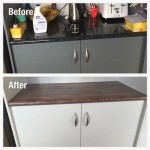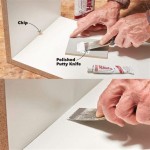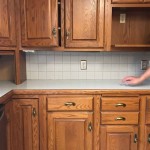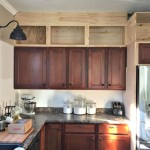How to Use Antiquing Glaze on Kitchen Cabinets
Antiquing glaze is a great way to add depth and character to your kitchen cabinets. It can help to create a more vintage or distressed look, which can be especially appealing if you're going for a traditional or rustic style in your kitchen. Applying antiquing glaze is relatively easy, but there are a few things you'll need to do to ensure that you get the best results.
Step 1: Prepare Your Cabinets
Before you can apply the antiquing glaze, you need to make sure that your cabinets are clean and free of any dirt or debris. You should also lightly sand the surface of the cabinets to help the glaze adhere better. Once the cabinets are sanded, wipe them down with a damp cloth to remove any dust.
Step 2: Apply the Base Coat
The next step is to apply a base coat of paint to your cabinets. The color of the base coat will determine the overall look of your finished cabinets, so choose carefully. Once you've applied the base coat, allow it to dry completely.
Step 3: Apply the Antiquing Glaze
Now it's time to apply the antiquing glaze. Start by applying a thin coat of glaze to a small area of your cabinets. Use a brush or sponge to apply the glaze, and work in small circular motions. Once you've applied the glaze to a small area, use a clean cloth to wipe off any excess.
Step 4: Blend the Glaze
Once you've applied the glaze to the entire surface of your cabinets, you need to blend it. This will help to create a more even and consistent finish. To blend the glaze, use a clean cloth to gently wipe the surface of the cabinets in a circular motion. Be careful not to over-blend the glaze, as this can remove it.
Step 5: Protect the Glaze
Once the glaze is dry, you need to protect it with a clear coat of polyurethane. This will help to seal the glaze and prevent it from chipping or peeling. Apply the polyurethane in a thin coat, and allow it to dry completely before using your cabinets.
Tips for Applying Antiquing Glaze
Here are a few tips for applying antiquing glaze to your kitchen cabinets:
- Use a light touch when applying the glaze. It's better to apply several thin coats than one thick coat.
- Work in small areas when applying the glaze. This will help to prevent the glaze from drying too quickly.
- Blend the glaze well. This will help to create a more even and consistent finish.
- Protect the glaze with a clear coat of polyurethane. This will help to seal the glaze and prevent it from chipping or peeling.

How To Glaze Cabinets At Home With The Barkers

How To Glaze Kitchen Cabinets

How To Glaze Kitchen Cabinets Diyer S Guide Bob Vila

How To Glaze Cabinets At Home With The Barkers

How To Glaze Cabinets At Home With The Barkers

Rescuing And Reviving A Glazed Distressed Kitchen Bella Tucker

How To Glaze Cabinets With Gel Stain Adventures Of A Diy Mom

How To Glaze Kitchen Cabinets Diyer S Guide Bob Vila

All About Antiquing Glaze For Cabinets And Furniture Porch Daydreamer

Painted Furniture Ideas 3 Steps To Glaze Cabinets Correctly
Related Posts








